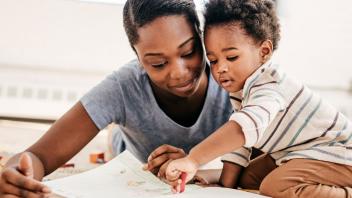Most children learn to read by age 7. Learning to read is built on a foundation of language skills that children start learning at birth a process that is both complicated and amazing. Most children develop certain skills as they move through the early stages of learning language.
The following list of such accomplishments is based on current research in the field, where studies continue and there is still much to learn. As you look over the list, keep in mind that children vary a great deal in how they develop and learn.
If you have questions or concerns about your child’s progress, talk with your child’s doctor, teacher, or a speech and language therapist. For children with any kind of disability or learning problem, the sooner they can get the special help they need, the easier it will be for them to learn.
At age 5, most kindergartners become able to:
- Sound like they are reading when pretending to read
- Enjoy being read to and retell simple stories
- Use descriptive language to explain or to ask questions
- Recognize letters and letter-sound matches
- Show familiarity with rhyming and beginning sounds
- Understand that print is read left-to-right and top-to-bottom
- Begin to match spoken words with written ones
- Begin to write letters of the alphabet and some words they use and hear often
- Begin to write stories with some readable parts
